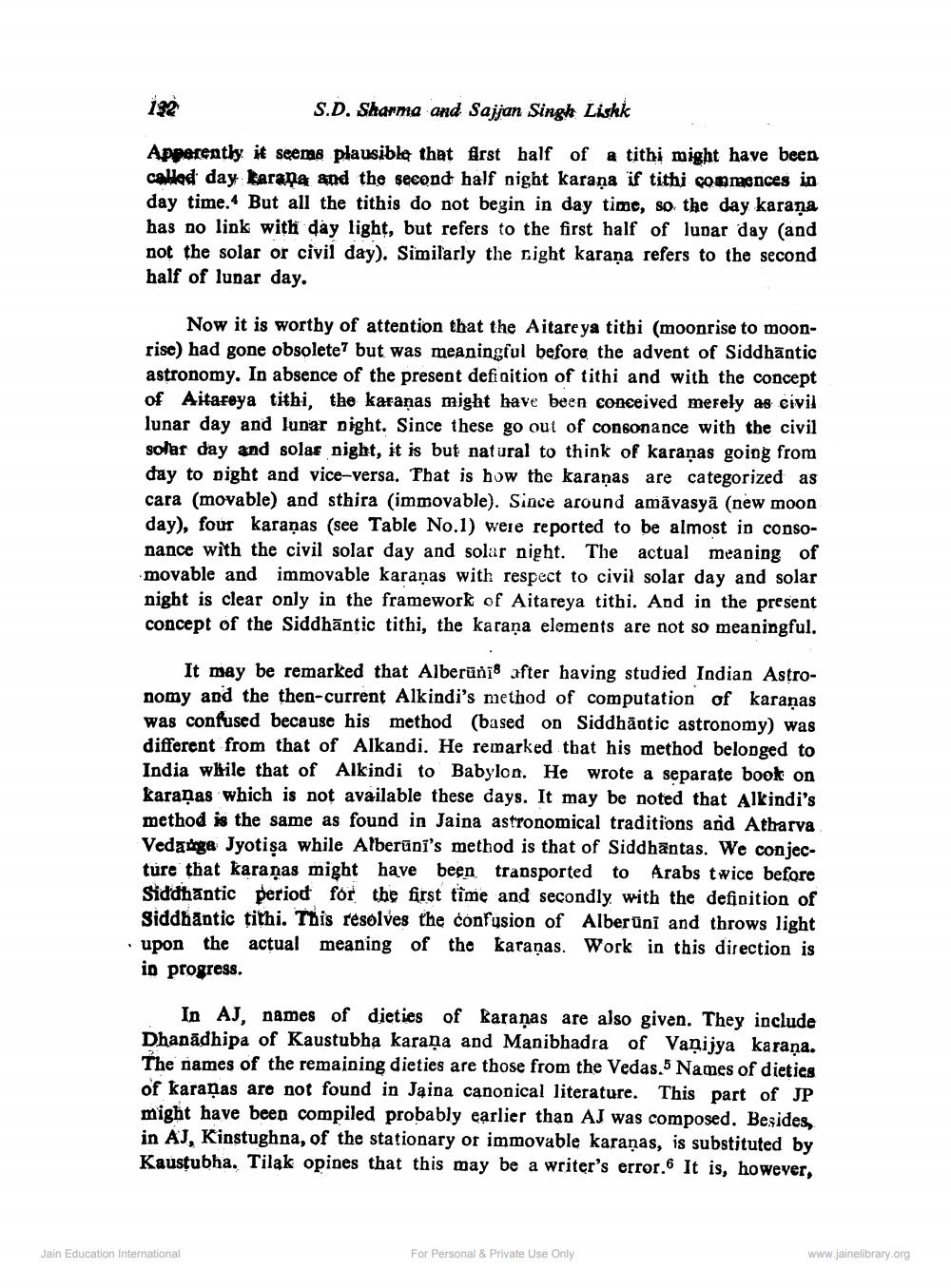________________
132
S.D. Sharma and Sajjan Singh Lishk
Apparently it seems plausible that frst half of a tithi might have been called day karana and the second half night karaṇa if tithi commences in day time. But all the tithis do not begin in day time, so the day karana has no link with day light, but refers to the first half of lunar day (and not the solar or civil day). Similarly the right karaṇa refers to the second half of lunar day.
Now it is worthy of attention that the Aitare ya titbi (moonrise to moonrise) had gone obsolete7 but was meaningful before the advent of Siddhāntic astronomy. In absence of the present definition of tithi and with the concept of Aitareya tithi, the karanas might have been conceived merely as civil lunar day and lunar Dight. Since these go out of consonance with the civil solar day and solar night, it is but natural to think of karanas going from day to night and vice-versa. That is how the karanas are categorized as cara (movable) and sthira (immovable). Since around amāvasyā (new moon day), four karañas (see Table No.1) were reported to be almost in consonance with the civil solar day and solar night. The actual meaning of movable and immovable karaņas with respect to civil solar day and solar night is clear only in the framework of Aitareya tithi. And in the present concept of the Siddhāntic tithi, the karaña elements are not so meaningful.
It may be remarked that Alberünig after having studied Indian Astronomy and the then-current Alkindi's method of computation of karaņas was confused because his method (based on Siddhāntic astronomy) was different from that of Alkandi. He remarked that his method belonged to India while that of Alkindi to Babylon. He wrote a separate book on karanas which is not available these days. It may be noted that Alkindi's method is the same as found in Jaina astronomical traditions and Atharva Vedanga Jyotisa while Alberūni's method is that of Siddhāntas. We conjecture that karanas might have been transported to Arabs twice before Siddhantic period for the first time and secondly, with the definition of Siddhantic tithi. This resolves the confusion of Alberūns and throws light · upon the actual meaning of the karaņas. Work in this direction is
in progress.
In AJ, names of dieties of karaņas are also given. They include Dhanādhipa of Kaustubha karaṇa and Manibhadra of Vaņijya karana. The names of the remaining dieties are those from the Vedas. Names of dieties of karanas are not found in Jaina canonical literature. This part of JP might have been compiled probably earlier than AJ was composed. Besides, in AJ, Kinstughna, of the stationary or immovable karaņas, is substituted by Kaustubha. Tilak opines that this may be a writer's error. It is, however,
Jain Education International
For Personal & Private Use Only
www.jainelibrary.org




